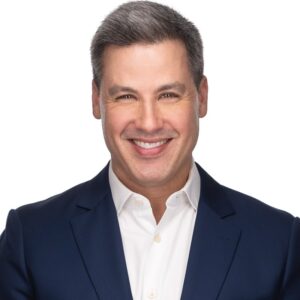You’ve been tasked with another ambitious company goal.
Maybe it’s increasing sales, boosting customer satisfaction scores, or even developing a new product.
You’ve pitched your ideas, but they aren’t gaining much traction.
How do you break through and build credibility?
Enter: design thinking.
Design thinking is not just a methodology; it is a mindset that encourages empathy, creativity, and a relentless focus on solving real user problems.
It’s also a process that will arm you with the insights, conversations and stories you need to build credibility from the ground floor back up to the boardroom.
Ashley Welch, co-founder of Somersault Innovation, is an experienced design thinker who helps organizations achieve breakthrough results with this practical process.
We recently sat down with Ashley to learn more about:
- What design thinking is
- Why more companies should use it
- How to put the 5 steps of design thinking into practice
Scroll down to discover why design thinking holds the key to unlocking new possibilities and the insights you need to successfully pitch your biggest and boldest ideas yet.
What exactly is design thinking?
Design thinking is a problem solving process like Agile or Six Sigma, that is ruthlessly focused on the end customer.
Ashley calls it a “recipe for innovation.”
If you’re familiar with the terms customer centricity, co-creation or the fail fast prototype, these all were born out of the design thinking world.
But, in some companies who have adopted design thinking, it goes beyond a process and becomes more of a mindset. In these companies, whether you’re working in HR, research and development or sales, you are customer centric in your thinking and as Ashley mentions, you’re always looking for ways to co-create with your end users.
Design thinking involves throwing out your own preconceptions and what you think you know and starting from scratch.
It also involves arming yourself with the customer insights, problems, stories and feedback you need to make real change happen.
Top tip: If you’re new to design thinking, Ashley’s top tip is to involve the other side sooner than you would have thought. She shares that it’s okay if you don’t have everything put together or figured out. The key is to engage the other side as early as possible in your process, even if that’s starting with an off-the-cuff conversation.
Why use design thinking?
Design thinking is one of the biggest competitive advantages a company can have.
Why?
Because if you solve for the needs of your customers first, they will always be loyal to you.
Ashley shares that design thinking makes it more likely you will delight your end customer and decrease your risk of failure.
She goes so far as to say that, “end user stories are gold.”
Need more convincing? Check out this list of six companies – like Starbucks, Nike and GE Healthcare – who have successfully used design thinking to achieve breakthrough results.

The 5 steps of design thinking
So how do you put design thinking into practice?
Below are five essential steps from empathetic listening to testing and iterating.
However, while these steps are listed in a sequential order, it’s important to know that design thinking is a non-linear, flexible and iterative process.
The ultimate goal of design thinking is to establish the deepest possible understanding of your end customer or user.
As you move through each of the steps below, you might acquire knowledge or insights from one stage that can inform a repeat of an earlier step. Look at each of the steps below as a guide, not a rule book.
Step one: Empathize
The first step of design thinking begins with user-centric research.
The goal in this step is to have a truly empathetic understanding of the problem you’re trying to solve.
When it comes to solving a human-centered design process, empathy plays a crucial role.
So how do you empathize? Ashley recommends really listening to understand what’s being said, but also trying to decipher what the underlying needs or motivations are. This goes beyond focus groups and surveys. It’s really sitting with your end users and applying active listening and curiosity to draw more information out from them.
Ashley’s advice is to sit with your own curiosity and ask more “why” questions.
Replace any negative or critical thoughts with curiosity and see what happens.
The outcome of this step is to gather a significant amount of information that will better define the problem, the end users and their needs, all of which will be used in the second step.
Step two: Define
The second step of the design thinking process is to begin to organize the information you’ve gathered.
The goal in this step is to derive insights from what you’ve learned.
This step might look like reframing the corporate goal or problem from the perspective of the end user.
Instead of writing down “we need to increase the sales of our vascular access dressings by 10%,” you might write “patients receiving IV treatment need more vascular access dressings that are gentle on their skin.”
The outcome of this step is to establish enough ideas, assumptions and focused feedback to begin solving the problem at hand in the next step.

Step three: Ideate
The third step of the design thinking process is to begin forming ideas and possible solutions.
The goal in this step is to look at the problem from the different perspectives of your end users or customers and begin to develop innovative solutions.
In this step you want to generate as many ideas as possible, exploring a wide range of potential solutions, and begin testing to select the best ideas you will likely move forward with.
In this stage you still want to avoid assumptions you might make about what the best possible solution might be and continue to keep your end user in mind as the focus for who you are solving for.
The outcome of this step is to have a few really good ideas and possible solutions you can begin to prototype in the next step.
Step four: Prototype
The fourth step of the design thinking process is to develop the possible solutions, concepts and ideas you’ve created.
The goal in this step is to begin to experiment with the different ideas you’ve developed and start to identify which parts of your ideas might work, and which may not.
Examples of prototypes in this phase might include: a new retail experience, an updated customer journey, a brand new product developed.
The outcome of this step is to present the prototypes and iterate based on reviews and critiques from your broader team. The goal isn’t to be perfect – it’s to learn and create.
Step five: Test
In the fifth step of design thinking your team will present the proposed solutions to the end users for fast, productive feedback and testing.
The goal in this step is to test your solution and try it out in real-world applications.
However, remember that design thinking is an iterative process. The feedback you receive in this step might result in refining the problem further and loop you back into a previous step to make updates or changes to your solutions.
The outcome of this step is to obtain the deepest possible understanding of your customers and the solution or product they are looking for.
The Takeaway
Design thinking goes beyond a customer survey or one-time effort to understanding a customer better.
It’s a mindset and framework to approaching almost everything you do at work – with the end customer always in mind.
In fact, customer-centricity is also the key to rising up the ranks in leadership. Former Baxter CEO Harry Kraemer said it best on our podcast when he explained his personal leadership model, which is just three words: leadership, influence, relate.
The more time you invest in understanding the perspectives of others, the more you will build your own influence and credibility. Plus, empathetic listening is one of the best ways to build innovative solutions to complex problems!
Did these leadership insights resonate with you? Are you looking to learn more?
Listen to the full interview with Ashley Welch on our podcast here: How to Build More Credibility Using Customer Conversations.
Learn more about Ashley and her approach to design thinking on her website: somersaultinnovation.com
Looking to build your influence? Get in touch below and ask to take our exclusive leadership influence styles assessment, here at Influence DNA.





